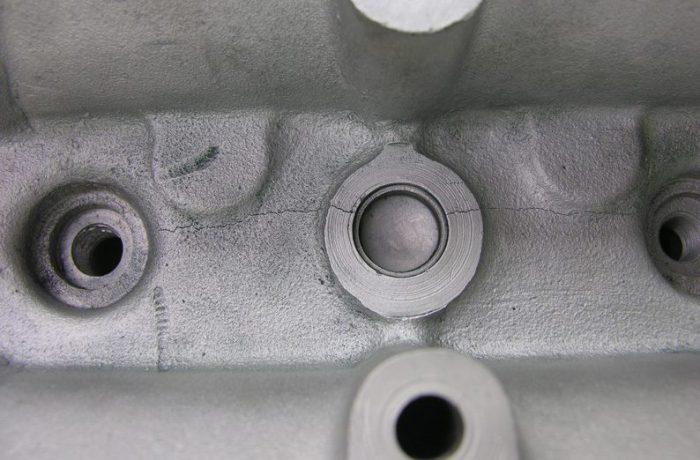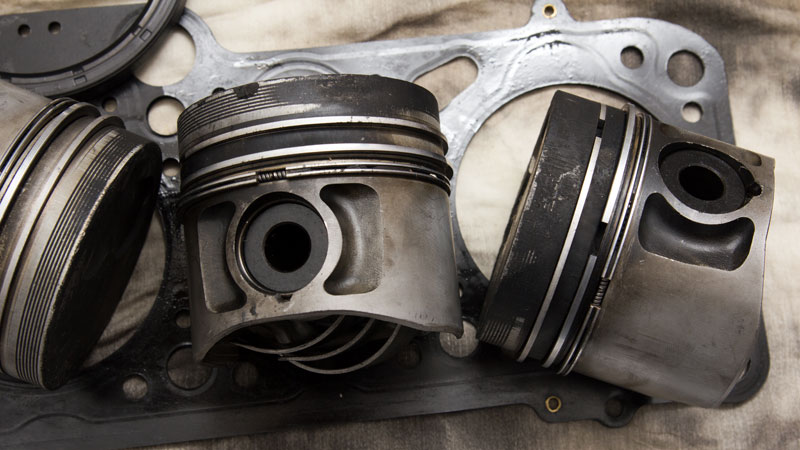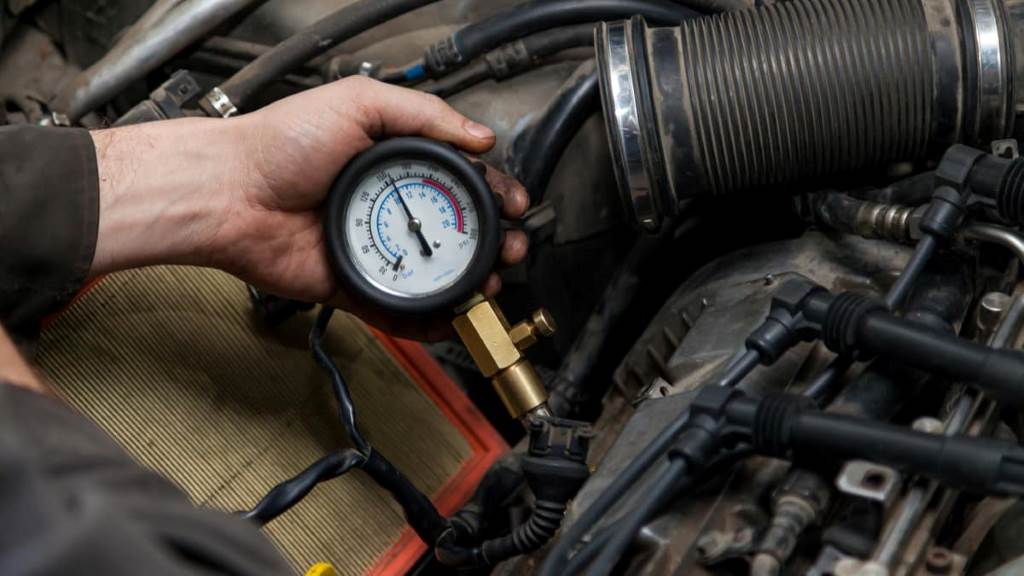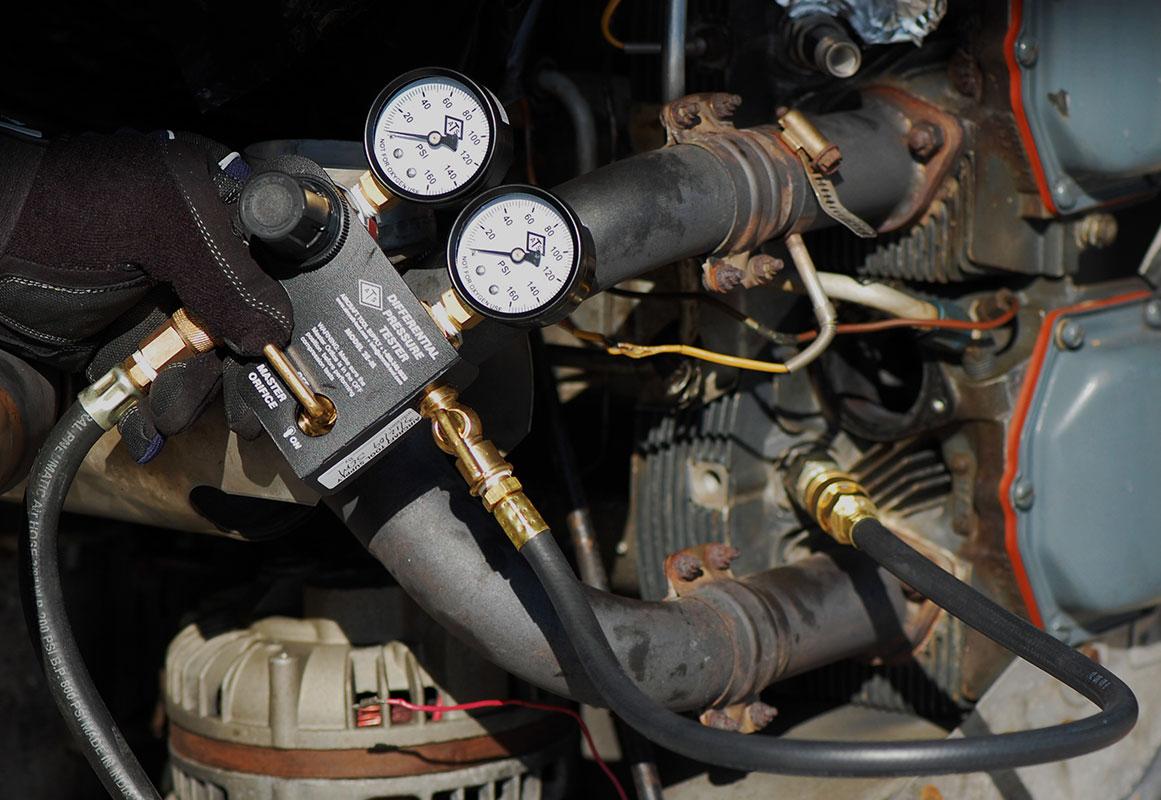If there’s low compression in one cylinder, you will face many problems including misfiring at the time of starting the car or weak engine performance. So how to fix low compression in one cylinder?
The compression in the internal combustion (IC) engine cylinders takes place when air and gas get mixed.
The process is necessary for the car to move and function. If the level of compression in one cylinder is not enough, problems can occur.
So how to stop this from happening? Well, before getting to the solutions, you should have basic ideas about the reasons that cause the problem.
Contents
Top 5 Causes of Low Compression in One Cylinder
Understanding the causes of the problem will help you to identify the source of the troubles and repair it.
Learning these problems will give an insight into how to fix low compression in one cylinder.
Cracked Cylinder Wall
It will trigger poor compression, leading to poor engine performance. To spot the complication, crank the engine with the radiator cap open and watch out if air bubbles are coming out.
These bubbles are gasses from the combustion chamber that leak into the cooling system through the cracked wall.

Gasket Issues
Worn-out or misaligned gaskets could also be the reason for poor compression. You can use a pressure tester to pinpoint the trouble in this case.
It measures the compression level in the cylinder. If the readings are different, you should check the gasket to locate the problematic spot.
Decrepit Timing Belt
It is the bridge between the camshaft and the crankshaft. The camshaft cannot function when the belt breaks or fails.
As a result, the intake valve won’t close and the exhaust valve gets sealed. The chain reaction will lead to the trapping of the gasses inside the combustion chamber and cause low compression.
Valve Problems
Learn how to fix low compression in one cylinder with the next circuit with us today!
Crank the engine with a compression tester in the place of the spark plug to identify any issues with the valve. Watch out for gas leakage from either the air inlet manifold or the exhaust pipe.
Leakage sound from any of them will confirm that the valve attached to that respective system is faulty.
Worn Pistons or Piston Rings
When pistons or piston rings are worn out, the gasses from the cylinder get into the engine’s crankcase through them.
One way of testing the issue is to pour viscous oil into the spark plug hole so that it reaches the combustion cylinder.

SEE MORE:
Flatten Camshaft
A camshaft lobe is located on each valve. The camshaft lobes can also become worn out, preventing the valve from opening.
When the valve is closed, the cylinder cannot receive air or expel exhaust gasses. As a result, compression concerns arise.
Remove the valve cover and turn the engine over to inspect the valves. Keep an eye on the valve movement. If you find an issue, the camshaft must be replaced.
Broken Head Gasket
Low compression in one cylinder might occur if your gasket is not correctly positioned or is deteriorated. Gas will escape from the cylinder through the tiny hole or gap between the head and the cylinder. This inhibits your engine from running properly.
Measure the compression level in the cylinder using a compression tester. If your readings disagree, be sure to inspect your gasket.
How to Fix Low Compression in One Cylinder
The first step to repair is to be sure that the compression in one of the engine cylinders is low. Use a compression gauge to check the measurement.
In case you don’t have one, take the car to an auto servicing shop so that a mechanic can do the testing.
If you find low compression, the next step is to check the cylinder, valves, gasket, and piston as you already know the problem could originate from these areas.
If you can detect any crack, damage, or slit, be ready for a costly and lengthy engine repair or replacement job.
In addition, how do you fix low compression in one cylinder fast? If one of the cylinders has low compression, pour a teaspoon of oil into the spark-plug hole and recheck.
When the compression rises, the rings are probably trapped or worn. The oil works as a seal, helping to reduce the gap between the rings and the cylinder wall, which is causing the cylinder to lose pressure.

FAQs On Low Compression in One Cylinder
-
Will low compression damage the engine?
If there is no compression at all, it indicates that a more serious mechanical fault has occurred, preventing your engine from even starting.
When the cylinder does not produce adequate compression, there is insufficient force to drive the piston and crankshaft, leading your automobile to fail completely.
-
Can you still drive a car with low compression on one cylinder?
If you have engine compression issues, your automobile may either misfire when you start the engine, run badly, or won’t start at all if you have low or no compression in all cylinders. With low compression, you can’t drive your automobile for very long, if at all.
-
Is it expensive to fix low compression?
There are several probable causes of poor compression, but you may expect to pay between $100 and $200 to remedy it. Your expenditures at the mechanic include both labor hours and any parts required to repair your vehicle.
-
What is a good compression test reading?
A good compression measurement for a gasoline engine is between 125-175 PSI, whereas the norm for a diesel engine is 275-400 PSI.
-
Can a low compression engine use high octane fuel?
When a low compression ratio engine is fed higher octane gasoline, the fuel will not burn properly, resulting in less power but maximum emissions.
-
What is the best fuel for a low compression engine?
In general, engines with compression ratios of 9.3: 1 or fewer may run on unleaded 87 octane fuel safely.
Higher compression ratio engines typically demand higher octane fuels. Many owners of automobiles built to run on 87 octane fuel report ping and knock.
Final Words
We have just learned how to fix low compression in one cylinder and some related issues such as causes and frequently asked questions. Hope you find this piece of information insightful and see you again with more car maintenance tips with Car From Japan!




Thanks for sharing. What would you say about your experiences with Ssangyong Korandos 2013 model petrol 2l engine. Is this a vehicle that give problems
Peace, thank you for the information about the cylinder 1 low compression very informative. Blessings
Peace good day thank you for your informative information about low compression in cylinder 1 blessings
I have no compression in one cylinder and is possibly down to a spark plug breaking in there i have a suzukiswift sport what are the posibilities its a piston and not damAged the block?
My EcoSport petrol have low compression 1.9, w2.9, 3.9 or 4.9 kg/cm2. Some mechanical engineer told me in ford company. You overhaul the engine . Now I am confused what to do. Any body cane tail me what to do for this .or it’s not issue please guide me
My EcoSport petrol have low compression 1.9, w2.9, 3.9 or 4.9 kg/cm2. Some mechanical engineer told me in ford company. You overhaul the engine . Now I am confused what to do. Any body cane tail me what to do for this .or it’s not issue please guide me . They done dry and wet test also.